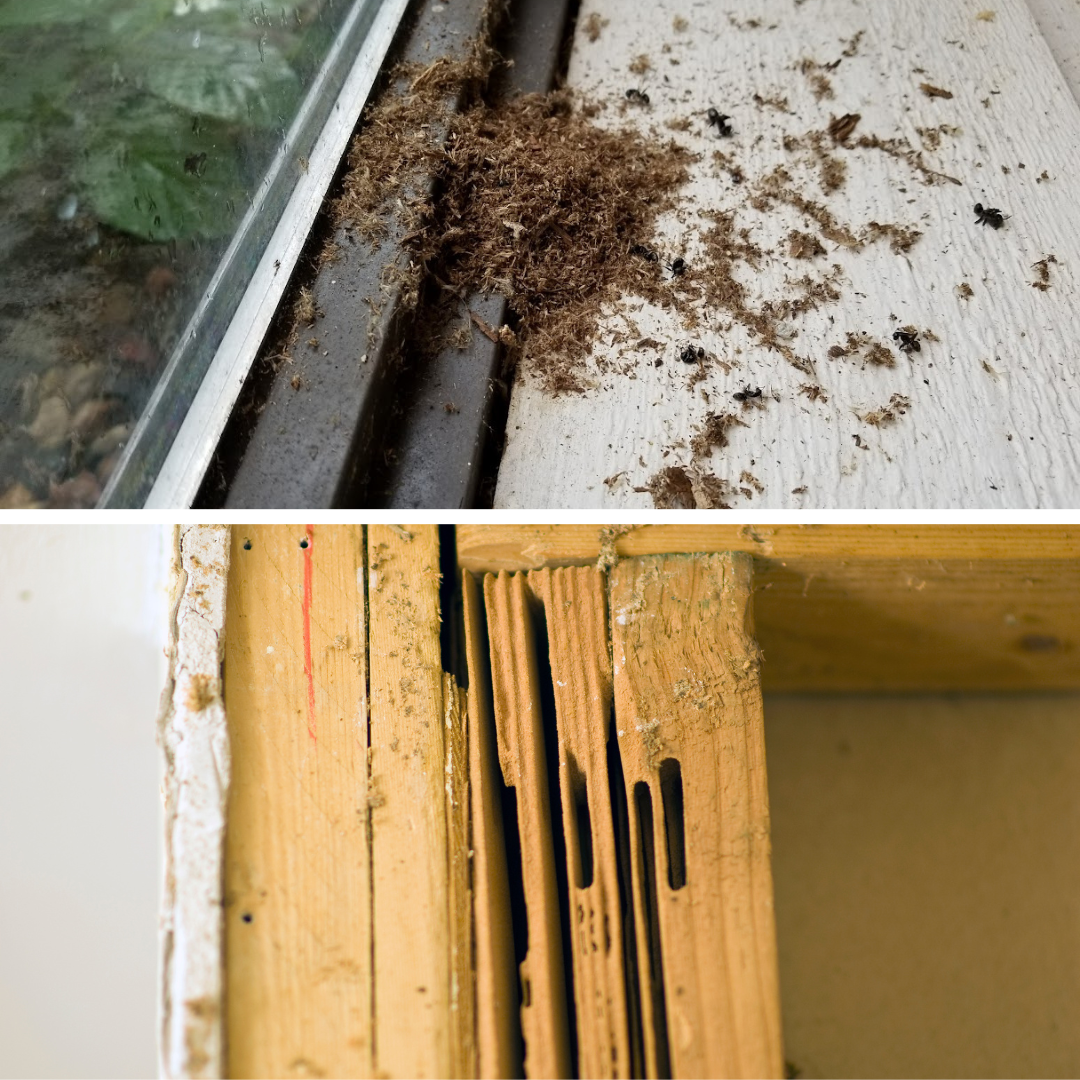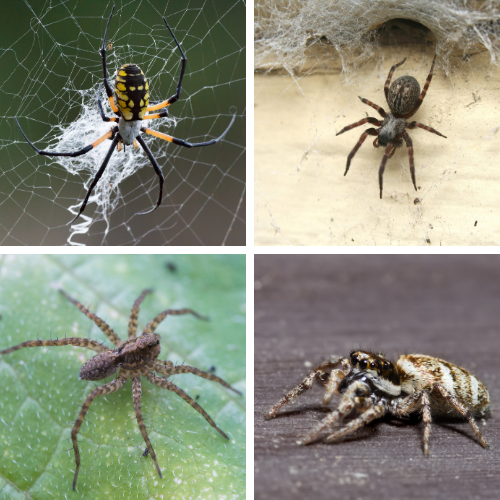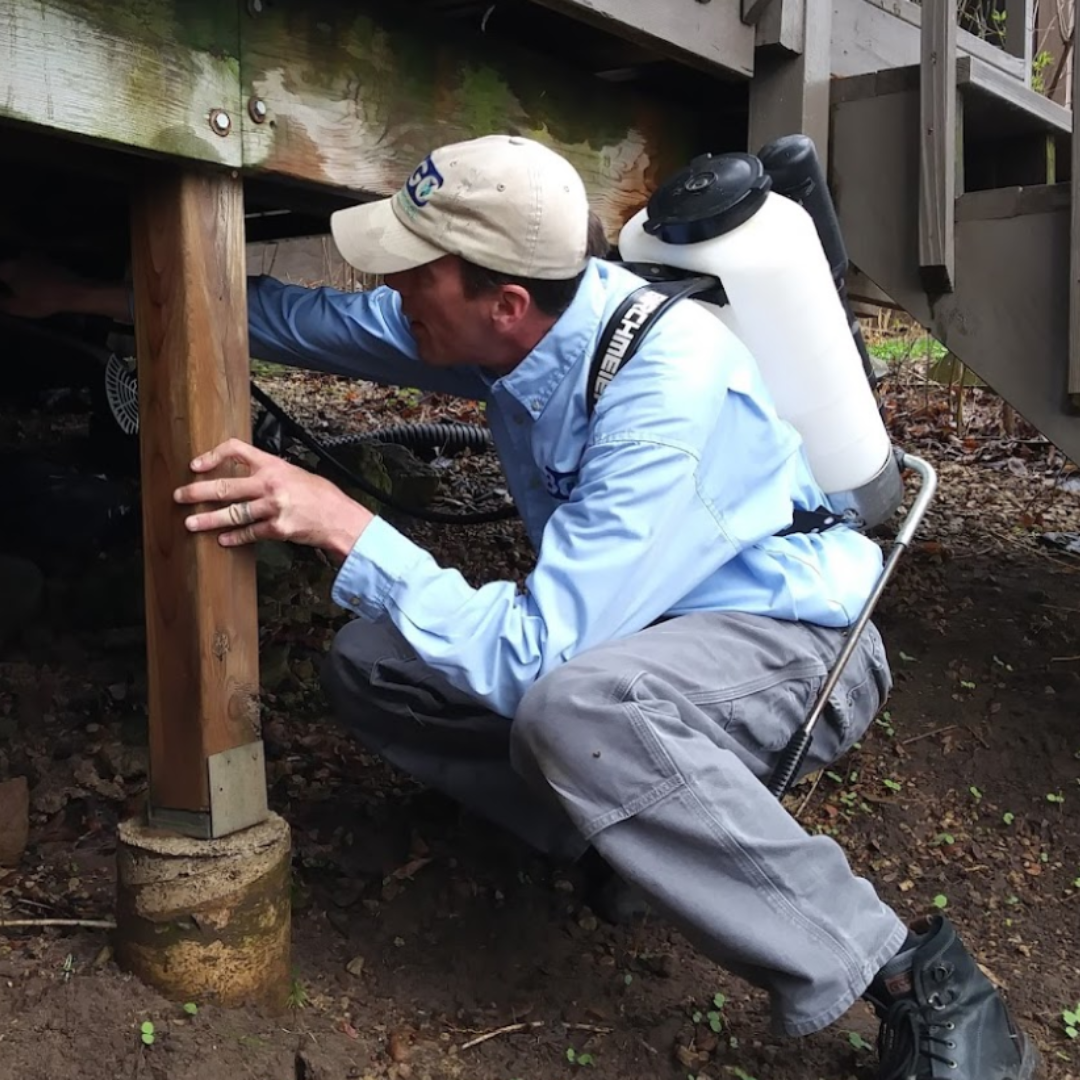Contact BOGO For Your Victoria Minnesota Pest Control Needs
Victoria is known as the City of Lakes and Parks. It’s surrounded by 22 protected parks and 12 lakes. With all those lakes, forests, and meadows the homes here are especially susceptible to pests.
These are the most common pests found in Victoria Minnesota
(Click the name to keep from scrolling)
To protect your home from all these insects and more our Insect Protection Plan or IPP is the best option
If you have any questions or concerns or would like to schedule an appointment call or send us an email
Call Us Today! 952-404-BOGO (2646)
Share This Page!
Ants in Victoria Minnesota
Carpenter Ant Appearance
Carpenter ant workers are all black or red and black. They have elbowed antennas that bend into a close to a 90-degree angle. The winged carpenter ants are often misidentified as winged termites. Some key difference to note is that a termite has a more rectangular body. Their bodies are the same thickness from top to bottom. While carpenter ants’ bodies are unevenly shaped similar to the number 8. Seeing winged carpenter ants means they are either mating or looking for a place to build a nest. Both male and female carpenter ants have wings. carpenter ant workers do not. Male and female ants mate in what is called a nuptial flight. This usually occurs between April and July.
Signs of Carpenter Ants
One thing to note is that carpenter ant colonies usually have multiple nests. These include one parent nest and multiple satellite nests. The parent nest is most commonly outside inside a rotting tree or tree stump. These nests house the queen and her larva, pupa, and workers. Once this nest grows to its full capacity some workers leave the nest with some larvae and pupa to make a satellite nest. These nests are most commonly inside homes. They find water-damaged wood that is easy to chew through. The chew tunnels or galleries through the wood. Inside the tunnels, they store food, larvae, and pupa. Frass or sawdust is another sign of carpenter ants inside your home or wooden deck.
Pavement Ant Appearance
Pavement ants are extremely common to find inside homes in Minnesota. Identifying them is relatively easy. They are all brown or brownish-black. They are much smaller than carpenter ants measuring around 0.3 cm. Carpenter ant workers are 0.3-0.5 inches long. Being that they are so small it becomes harder to notice distinct characteristics. But their antennas are also different. Instead of elbowed antennas, they have clubbed antennas. Male and female pavement ants also have wings but are the same size as the workers. They are commonly seen flying in the spring but if they are found inside in the fall or winter that is a good indication that there is an ant colony living inside the home.
Signs of Pavement Ants
Pavement ants are known for their large appetites. They feed on a large variety of sugary food and protein-rich foods. Just a few of the most common include; insects, fruits, seeds, meat, dog/cat food, and other human foods containing sugar. If there is a spill or a mess on the floor it’s fair game for a pavement ant. They are capable of traveling 100 yards away from their nest to find food. Most of their outdoor nests are easy to locate as they almost always have a small pile of sand and dirt piled in a circle around the entrance to their nest. Their nests can be found under sidewalks, driveways, and patios. In the winter pavement ants can stay active. You can find them building nests under heated floors, home appliances, cement slabs, and insulated foundations.
Click below to learn more about our ant services
To learn more about ants visit our ant identification page
Mice in Victoria Minnesota
Mouse Behavior
Mice that live in Minnesota behave in similar ways. They are nocturnal and don’t hibernate in the winter. They also don’t have a designated breeding season like other mammals. Mice have two jobs that they continue doing all year. One of their jobs is to forage for food and store it away for winter. Each mouse also lives in groups made up of multiple females their offspring and 1 or 2 males. Each mouse in the group finds food for the whole group to eat and help with feeding the offspring. The second job they do is breed. There is no breeding season for mice and they will breed all year as long as the temperature they live in is controlled. When they leave their nest to find food they leave scent trails to find their way back in the dark. These scent trails can sometimes be visible on the foundation or pipes going into the home. These are called rub marks and are mixed with the grease, mud, and urine that they secrete when roaming around outside.
Mouse Service
It’s extremely difficult to find a mouse service that is as truthful and effective as BOGO’s. This is our signature service and how our small business stands out from the rest of the large pest control companies in the Twin Cities. We start each mouse service with a thorough inspection of the exterior of the property. Taking photos of entry points, signs of mouse activity, and limitations that will deter us from sealing up areas of the home. We are 100% transparent with our customers on the excessiveness of the problem and where the mice are coming in from. We do not try to sell our service by making promises we can’t keep. Instead, we follow the science regarding the behavior of mice. How they climb, what they can and can’t chew through, and the reasons why they are drawn to the home. After explaining the problem the customer decides whether they would like to have their home mouse proofed. When mouse-proofing a home we seal up the home from the outside and use materials that are impossible for a mouse to chew through and make sure the hole will be sealed for a long time.
To learn more about BOGO’s signature mouse service
To learn more about mice and their behavior visit our mouse identification page
Wasps in Victoria Minnesota
Wasp and Bee Behavior
3 common social wasps live in Minnesota. The paper wasp (top left), bald-faced hornet (top right), and the yellow jacket (bottom). Paper wasps build nests that are completely exposed. Their hexagonal pattern where the pupa and larvae live inside is visible from the outside. Bald-faced hornet nests are all built at least 3 feet off the ground and built in a tear-drop shape. Each nest by the end of the summer can have 400-700 wasps. Yellow jackets build even larger nests. Their nests grow to have 1,000-4,000 workers in one nest. They build their nests in various locations. You can find them underground in dug-out rodent tunnels, inside cracks going into a home or shed, inside trees, in aerial nests that are sphere-shaped, and in many areas that allow the yellow jackets to feel safe and protected. None of these wasps reuse their nest after it is destroyed or killed by the winter. They make new nests each spring and summer.
Wasp Service
The service we provide for dealing with social wasps is by using a product that doesn’t kill the wasps right away. Because they live together in large groups of 100s to 1000s in one nest. Out of all the workers that live in a nest only a small percentage of them leave the nest to forage for food and nesting material. For the product to affect all the wasps the foraging wasps need to be able to carry it inside the nest and give it to the rest of the colony. They can do this because as they become in contact with our product it takes 6-12 hours to die. It usually takes around 2 weeks for the entire wasp colony living to be eradicated.
Click below to learn about our wasp services
To learn more about wasps and bees visit our identification page
Spiders in Victoria Minnesota
Spider Behavior
Spiders have been on our planet for 400 million years. Over this time they have established themselves as an essential part of our planet’s ecosystem. Without them, the insect population would grow exponentially. They eat insects like roaches, moths, ticks, mosquitos, and others. By eating all these insects this also helps reduce the spread of diseases. Not just diseases that infect people but also diseases that kill plants and crops. Each spider can be characterized as either a web-building spider or a hunting spider. Some of the most common of these spiders include; the garden spider (top left), common house spider (top right), and the daddy longlegs (aka harvestmen spider). Hunting spiders leave their burrow or crevices to go out and search for insects to eat. The most common hunting spiders in Minnesota are the wolf spider (bottom left), jumping spider (bottom right), and sac spider.
Spider Habitat
Spiders are drawn to habitats that are populated with insects for them to eat. For habitats that are outside this includes forests and places near bodies of water. Insects like mosquitos, flies, and ticks are all drawn to water and moisture. Forests or places with an abundance of leaf litter, attract a large population of insects whose roles are to feed on decaying organic matter. These insects include; millipedes, earwigs, silverfish, and others. When spiders are inside homes the same principle applies as they prefer to live in homes that may be dealing with other insect infestations. Spiders will choose to live inside unfinished rooms. Other insects use exposed pipes and wires to move through the home. They also commonly live in corners, under furniture, and in places with lots of clutter.
Spider Service
BOGO’s spider service prioritizes the spider activity around the exterior of the home. Spiders that live on the lawn or landscaping should be left alone. These spiders play an important role in the ecosystem. Most spiders that are inside the home come in from the outside. By spraying the exterior we create a barrier that kills the spiders before they get inside. Before we spray we make sure to knock down any cobwebs. These cobwebs can have egg sacs inside them that if they hatch could release hundreds of spiders from just one egg. This is the most common way that a spider problem can go from bad to worse in just a matter of days. The product we use stays effective for 2 months on the exterior of the home. For this reason, it is highly advisable to join an insect protection plan to make sure the home has a continuous barrier around the home.
Click below to learn about our Spider Service
To learn more about spiders read our blog “We Love Living Near Woods and Water and so do Spiders!”
Boxelder Bugs and Stink Bugs in Victoria Minnesota
Boxelder Bugs
Boxelder bugs are drawn to homes and buildings in the fall to look for structures to overwinter inside. They are seen landing in swarms most commonly on south-facing exterior walls that are warmed up from the sun. When winter starts they can be seen roaming around the inside of the home, around windows, chimneys, and ceilings on sunny days in the winter. As many as you see roaming around inside they aren’t mating or laying eggs. Their mating season starts in the spring and summer. They mate and lay their eggs on the branches and leaves of female boxelder trees. When the eggs hatch the small nymphs feed on the helicopter seeds the trees produce. Adult boxelder bugs feed on the seeds and also feed on fruits and grass.
Stink Bugs
Stink bugs are an invasive species and were first spotted in Minnesota in 2010. For many pest control companies, there is still a lot of unknown regarding the most effective ways to kill them. They can be seen in swarms landing on the exterior of buildings and homes in search of places to overwinter. They have been noted to enter inside homes through facias. soffits, chimneys, and through flue stacks. In the winter when you are seeing stink bugs inside they’re not mating or laying eggs. The best way to get rid of them is to vacuum them up. They start mating in the spring and all through summer. They lay eggs on various plants and feed on different foods such as; sweet corn, apples, grapes, and tomatoes.
Boxelder Bug and Stink Bug Service
This service is done in the fall season. The effectiveness of the service depends on when in the fall season it is applied. Ideally, the service should be done before the swarms of boxelder bugs and stink bugs start looking for an area to overwinter. By the time the bugs are visible on the exterior of the home there is most likely a population of them that has already made their way inside. We spray close to the entire surface area of the home. When the product sticks it stays effective for 2 months. 2 months is plenty of time to kill most of the bugs before they make their way inside.
Click below to learn more about our boxelder/stink bug service
To learn more about stink bugs and boxelder bugs read our blog “Minnesota Fall Pests.”
Ash Tree Service in Victoria Minnesota
Emerald Ash Borer Behavior
The emerald ash borer uses ash trees as a host plant. They lay their eggs on the bark. One female can lay between 60-90 eggs at one time. When each egg hatches the emerald ash borer larvae chew through the bark and move into the cambium layer of the tree. When trees get older they grow rings and the cambium layer is the outermost ring of a tree. As the larvae feed on the layer it makes it harder for the tree to spread nutrients and water to all the branches and leaves of the tree. An infected ash tree will first start showing signs in the canopy. The highest branches die first. Over time if the tree is not treated the bark will start peeling off. When this happens the tree is too sick to be treated and needs to be cut.
Ash Tree Service
Our ash tree service starts by drilling multiple injection points around the base of the tree. We try our best at aiming for the roots right before they go into the ground. Once each injection point is made we inject our product into each hole individually. Doing it individually takes a little longer than other treatment options, but the benefits outweigh the cons. One benefit is that each injection point receives an equal amount of product. It also allows us to see and track that the tree takes up the product at each injection point.
For more information about the emerald ash borer in Victoria Minnesota
Learn more about the benefits of treating ash trees and about the emerald ash borer
To protect your home from all these insects and more our Insect Protection Plan or IPP is the best option
BOGO Provides Pest Control Services For the Twin Cities and Beyond! Just a Few Cities We Service For Include
Anoka|Apple Valley|Bloomington|Burnsville|Coon Rapids|Champlin|Chanhassen|Deephaven| Delano|Eagan|Eden Prairie|Edina|Elk River|Excelsior|Golden Valley|Independence|Lino Lakes|Long Lake|Maple Grove|Maple Plain|Medina|Minneapolis| Minnetonka|Minnetrista|Mound|New Brighton|North Oaks|Orono|Prior Lake|Plymouth|Ramsey|Rogers|Shoreview| Shorewood|Stillwater|St. Louis Park|St. Paul|Victoria|White Bear Lake| Wayzata|Woodbury|
(Click on the cities to learn about what pests to watch out for in your area)
If you have any questions or concerns or would like to schedule an appointment call or send us an email
Call Us Today! 952-404-BOGO (2646)





















